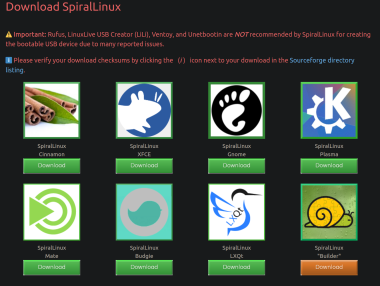SpiralLinux - It's really Debian underneath the hood! ( lemmy.ca )
I recently ran across SpiralLinux - GitHub page, and found the concept of how the maintainer is packaging it very cool.
The maintainer has been maintaining Gecko Linux for a while now - it has the same underlying concept.
The gist is - you’re basically installing Debian, but with customizations that the maintainer(s) thought would be very helpful. Basically - better out of the box experience for new users, but also less work to do even for experienced users, and it comes with different download flavors - Gnome, Plasma, XFCE, Mate, etc.
Bit more detail by the maintainer in this Reddit comment:
Exactly. It’s like I went over to your house and installed and configured Debian on your computer, and then you kicked me out of your house as soon as I finished. ;-) The installed system no longer has any connection whatsoever with me or the SpiralLinux project, which is good because you wouldn’t want your entire system to depend on a random single developer maintaining it.
(original Reddit comment has more details).
I thought this was pretty cool. I’m still trying to read up online on trying to find how the package lists are maintained, etc., and I might be interested in contributing if I’m able to in the future.
Just wanted to share!
